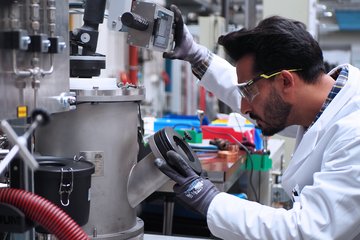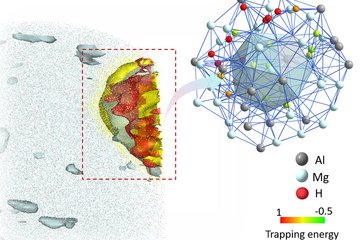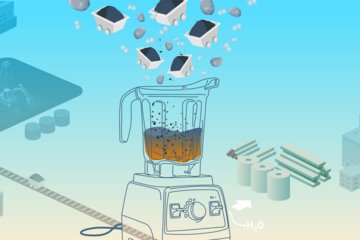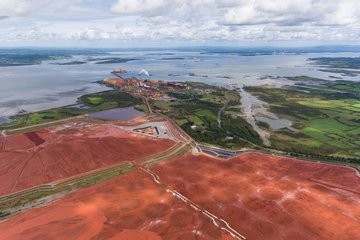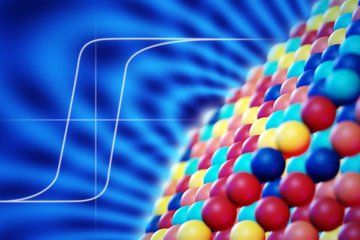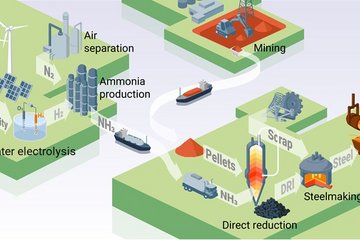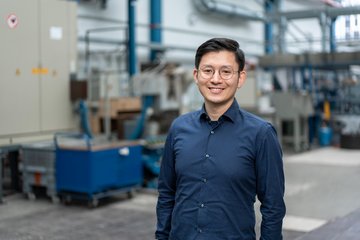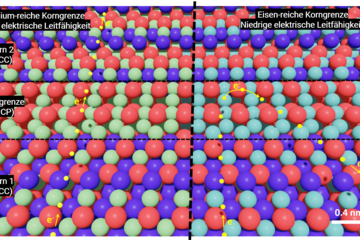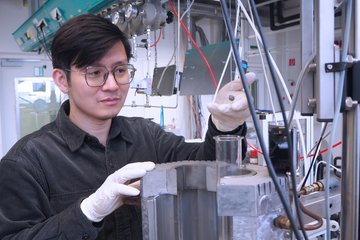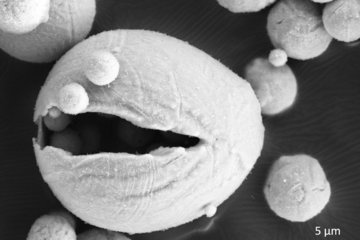Alle Typen
281.
Zeitschriftenartikel
Machine-learning-based atom probe crystallographic analysis. Ultramicroscopy 194, S. 15 - 24 (2018)
282.
Zeitschriftenartikel
Combinatorial metallurgical synthesis and processing of high-entropy alloys. Journal of Materials Research 33 (19), S. 3156 - 3169 (2018)
283.
Zeitschriftenartikel
Nano-laminated thin film metallic glass design for outstanding mechanical properties. Scripta Materialia 155, S. 73 - 77 (2018)
284.
Zeitschriftenartikel
Formation of eta carbide in ferrous martensite by room temperature aging. Acta Materialia 158, S. 297 - 312 (2018)
285.
Zeitschriftenartikel
Elemental segregation to twin boundaries in a MnAl ferromagnetic Heusler alloy. Scripta Materialia 155, S. 144 - 148 (2018)
286.
Zeitschriftenartikel
On the role of the collinear dislocation interaction in deformation patterning and laminate formation in single crystal plasticity. Mechanics of Materials 125, S. 70 - 79 (2018)
287.
Zeitschriftenartikel
Deformation mechanisms, activated slip systems and critical resolved shear stresses in an Mg-LPSO alloy studied by micro-pillar compression. Materials and Design 154, S. 203 - 216 (2018)
288.
Zeitschriftenartikel
Elemental partitioning and site-occupancy in γ/γ′ forming Co–Ti–Mo and Co–Ti–Cr alloys. Scripta Materialia 154, S. 159 - 162 (2018)
289.
Zeitschriftenartikel
The Role of Oxidized Carbides on Thermal-Mechanical Performance of Polycrystalline Superalloys. Metallurgical and Materials Transactions A 49 (9), S. 4236 - 4245 (2018)
290.
Zeitschriftenartikel
Correlative Microscopy—Novel Methods and Their Applications to Explore 3D Chemistry and Structure of Nanoscale Lattice Defects: A Case Study in Superalloys. JOM-Journal of the Minerals Metals & Materials Society 70 (9), S. 1736 - 1743 (2018)
291.
Zeitschriftenartikel
Microstructural and mechanical characterization of an equiatomic YGdTbDyHo high entropy alloy with hexagonal close-packed structure. Acta Materialia 156, S. 86 - 96 (2018)
292.
Zeitschriftenartikel
Thermophysical and Mechanical Properties of Advanced Single Crystalline Co-base Superalloys. Metallurgical and Materials Transactions A 49 (9), S. 4099 - 4109 (2018)
293.
Zeitschriftenartikel
Segregation assisted grain boundary precipitation in a model Al–Zn–Mg–Cu alloy. Acta Materialia 156, S. 318 - 329 (2018)
294.
Zeitschriftenartikel
Parameter free quantitative analysis of atom probe data by correlation functions: Application to the precipitation in Al–Zn–Mg–Cu. Scripta Materialia 154, S. 106 - 110 (2018)
295.
Zeitschriftenartikel
On the origin of the improvement of shape memory effect by precipitating VC in Fe–Mn–Si-based shape memory alloys. Acta Materialia 155, S. 222 - 235 (2018)
296.
Zeitschriftenartikel
On the diffusive phase transformation mechanism assisted by extended dislocations during creep of a single crystal CoNi-based superalloy. Acta Materialia 155, S. 362 - 371 (2018)
297.
Zeitschriftenartikel
Strain-Induced Asymmetric Line Segregation at Faceted Si Grain Boundaries. Physical Review Letters 121 (015702), 015702, S. 1 - 5 (2018)
298.
Zeitschriftenartikel
Crystallographic examination of the interaction between texture evolution, mechanically induced martensitic transformation and twinning in nanostructured bainite. Journal of Alloys and Compounds 752, S. 505 - 519 (2018)
299.
Zeitschriftenartikel
Precipitation hardening effects on extension twinning in magnesium alloys. International Journal of Plasticity 106, S. 186 - 202 (2018)
300.
Zeitschriftenartikel
An integrated crystal plasticity–phase field model for spatially resolved twin nucleation, propagation, and growth in hexagonal materials. International Journal of Plasticity 106, S. 203 - 227 (2018)
